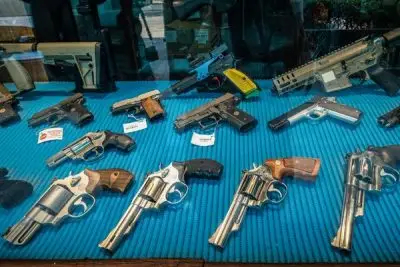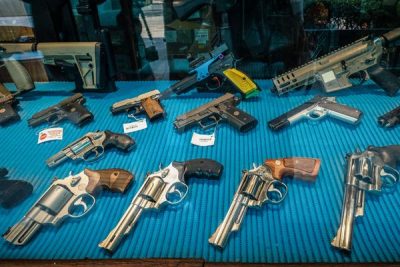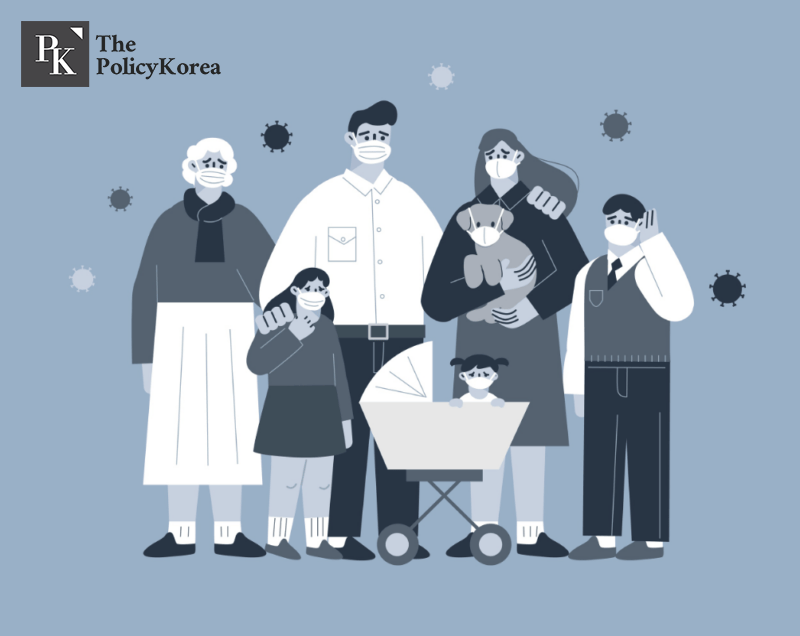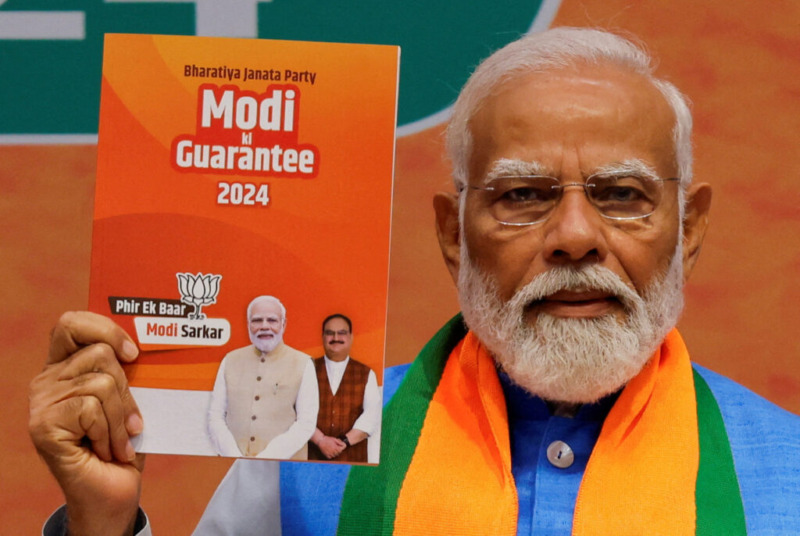[동아시아포럼] 갈수록 커지는 태국의 총기 문제
태국, 올해도 시암 파라곤 총격 등 크고 작은 총기 사건 잇달아 공공 안전에 대한 불신으로 늘어난 총기 보유, 군·경찰보다 많은 민간 보유량 높은 총기 보유량으로 사회적 불안 가중, 범정부 차원의 적극적 조치 선행돼야
[동아시아포럼]은 EAST ASIA FORUM에서 전하는 동아시아 정책 동향을 담았습니다. EAST ASIA FORUM은 오스트레일리아 국립대학교(Australia National University) 크로퍼드 공공정책대학(Crawford School of Public Policy) 산하의 공공정책과 관련된 정치, 경제, 비즈니스, 법률, 안보, 국제관계에 대한 연구·분석 플랫폼입니다. 저희 폴리시코리아(The Policy Korea)와 영어 원문 공개 조건으로 콘텐츠 제휴가 진행 중입니다.
2022년 10월 6일 태국 북동부 농부아람푸(Nong Bua Lam Phu) 주 소재 어린이집에서 총·칼을 이용한 난동 사건이 발생했다. 이 사건으로 36명이 사망했는데 이 중 절반 이상이 유아인 것으로 밝혀져 충격을 안겼다. 당시 정부는 부랴부랴 총기 통제를 강화하기 위한 여러 공약을 발표했지만, 아직까지 이행되지 않고 있는 실정이다.
이런 가운데 올해 10월 3일에도 방콕 중심부에 위치한 유명 쇼핑몰 시암 파라곤에서 대규모 총격 사건이 발생했다. 범인은 14세 소년으로, 개조한 권총을 사용한 것으로 드러났다. 이에 태국 새 정부는 전임 정부와 유사한 공약을 발표하는 한편, 총기에 대한 더욱 강력한 규제를 추가했다. 다만 실제 총기 규제에 대한 정부 과거 실적에 비춰볼 때 해당 규제 조치가 성공할 가능성이 낮다는 의견이 지배적이다.

공공 안전에 대한 불신, ASEAN 회원국 중 민간 총기 소유량 가장 높은 태국
2017년 소형 무기 조사에 따르면 태국은 아세안(ASEAN·동남아시아국가연합) 회원국 중 민간 총기 소유량이 가장 많은 국가로, 약 1,030만 정의 총기를 소유한 것으로 나타났다. 이는 다른 9개국의 민간을 포함한 전체 총기 수를 합친 것보다 많으며, 100명 당 민간 총기 보유율도 15.1개로 가장 높은 수치를 보였다. 이뿐 아니라 태국의 민간 총기 소유량은 군사 소유량의 10배 이상, 경찰의 약 45배로 나타났다. 반면 인도네시아는 약 170만 정의 군용 총기와 43만 정의 경찰 총기를 소유하고 있으며 민간인이 소유한 총기는 82,000정에 불과한 것으로 알려졌다. 10개 ASEAN 회원국 중 민간 총기 소유가 군사 및 경찰 기관보다 높은 곳은 태국, 필리핀 및 미얀마뿐이다.
원인으로는 국민들의 공공 안전에 대한 깊은 불신이 지목된다. 실제로 시장조사기관 갤럽(Gallup)의 ‘2022년 법과 질서 지수’에 따르면 태국과 미얀마는 ASEAN 회원국 중에서 가장 낮은 순위를 기록했다. 다른 ASEAN 국가들은 2019년부터 점수가 상승했지만, 미얀마는 2019년 85점에서 2022년 73점으로 급락했고, 태국의 경우 81점에서 76점으로 소폭 감소했다. 미얀마의 하락은 2021년 정치적 격변과 군사 개입 영향으로 설명되지만, 태국은 정치적 이슈가 없음에도 불구하고 2020년부터 ASEAN 회원국 중에서 최하위권을 벗어나지 못하고 있다.
공공 안전에 대한 불안감은 정부 관료들 사이에도 퍼져있다. 알려진 바에 따르면 태국의 총기 중 상당수는 정부 관료들이 시장 가격보다 저렴하게 개인 총기를 구입할 수 있는 ‘총기 복지 프로그램’에 의해 구매된 것으로 나타났다. 태국 정부는 해당 프로그램을 2009년에 시작했는데, 지난해 4월에는 각 부처를 위한 ‘참여 초대 행사’까지 진행한 것으로 알려졌다. 프로그램의 공식 목적은 관료들이 직무 수행에 있어 자신의 생명과 재산을 보호하기 위해 총기를 소유할 수 있도록 하는 것이다.
안전 위해 택한 총기 소유, 오히려 사회적 불안 조성
다만 일각에서는 높은 총기 소유율이 오히려 공공 안전에 대한 불안감을 조성한다는 분석도 제기된다. 근거로는 민간 총기 소유가 거의 없는 인도네시아와 싱가포르의 법과 질서 지수가 제시됐다. 실제로 인도네시아는 2019년 이후 갤럽의 법과 질서 지수에서 2위를 유지해 오고 있으며, 1위는 싱가포르의 차지다. 양국은 ASEAN 국가 중 민간인 100명당 총기 소유율이 거의 ‘0’에 가깝다.
갤럽의 조사 결과는 태국의 총기 폭력 데이터와도 일치하는 경향을 보였다. 세계인구리뷰(WPR)에 따르면 ASEAN에서 필리핀에 이어 태국이 100,000명당 총기 사망률이 두 번째로 높은 것으로 나타났다. 실제 태국에서는 거의 매주 총기 범죄가 뉴스가 보도되는 형국이다. 지난달 6일에는 방콕에서 10대 1명이 직업 학생 2명의 총격으로 사망하는가 하면, 일주일도 채 지나지 않은 11일에는 2명의 남성이 직업학교에 총을 난사해 학생 1명과 교사 1명이 사망하는 사건이 발생하기도 했다.
더 큰 문제는 태국의 민간 총기 중 약 40%가 불법이란 사실이다. 규제 당국에 따르면 1,030만 정의 민간 총기 중 정식 등록된 총기는 620만 정에 불과하다. 불법 무기의 상당 부분은 22구경·38구경 태국식 수제 총기로 1947년 총기·탄약·폭발물·불꽃 및 총기 동등물에 관한 법이 생기기 전부터 수제 총기 제작 방법이 세대를 거쳐 전해져 온 탓에 공급이 원활할 수 있었던 것으로 분석된다. 약 1세기에 걸친 정부의 총기 규제에도 불구하고, 불법 무기가 온라인까지 널리 퍼져 있다는 점은 태국의 높은 총기 수요를 여실히 방증한다.
앞서 언급했듯 태국의 높은 총기 소유율은 법과 질서에 대한 불신에서 비롯됐을 가능성이 높다. 여기엔 태국 국민들의 구시대적 남성 가치관과 이에 따른 폭력에 대한 높은 수용 수준 등 다른 요인들도 작용한 것으로 보인다. 그러나 민간 측면의 문제 해결에 앞서, 새 정부가 총기 복지 프로그램 폐지·경찰 개편을 통한 적극적인 범죄 예방 조치와 같은 공적 정책을 먼저 시행함으로써, 국민의 법과 질서에 대한 신뢰를 회복하는 것이 급선무다. 이같은 범정부 차원의 해결책은 대중의 높은 지지로 이어질 수 있는 만큼, 국가가 선봉에 나서야 할 시점이다.
원문의 저자는 분와라 수마노(Boonwara Sumano) 태국개발연구소(TDRI) 선임 연구원입니다.

Thailand’s growing gun problem
On 6 October 2022, a gun and knife attack at a nursery in Nong Bua Lam Phu province resulted in 36 deaths, with more than half being toddlers. The government at the time made several promises to tighten gun control, but these remain unfulfilled.

Tragically, another mass shooting occurred on 3 October 2023 at the popular Siam Paragon shopping mall in the heart of Bangkok, executed by a 14-year-old with a modified blank gun. The newly formed government responded with promises reminiscent of its predecessor’s, adding even more restrictive regulations on ball-bearing guns and blank guns. But given the government’s track record with actual firearms, the likelihood of these measures being successful remains low.
According to the Small Arms Survey of 2017, Thailand boasts the highest civilian firearm ownership among ASEAN member states with 10.3 million guns. It also has the highest rate of civilian firearms per 100 people — 15.1. In fact, the number of civilian guns in Thailand alone surpasses that of the other nine ASEAN countries combined. This begs questions why gun ownership in Thailand is so high.
Civilian firearm ownership in Thailand is 10 times higher than its military holdings and approximately 45 times that of law enforcement. In stark contrast, Indonesia has about 1.7 million military firearms and 430,000 in law enforcement, compared to a mere 82,000 held by civilians. Among the 10 ASEAN member countries, only Thailand, the Philippines and Myanmar have higher civilian gun ownership than their combined military and law enforcement agencies.
This disparity may indicate a deep-seated mistrust of public safety. According to Gallup’s 2022 Law and Order Index — a composite score derived from surveys on trust in local police, feelings of safety when walking alone at night and experiences of theft and assault — Thailand and Myanmar rank the lowest among ASEAN members. While other ASEAN countries saw an increase in scores from 2019, Myanmar’s score plunged from 85 in 2019 to 73 in 2022, and Thailand’s decreased from 81 to 76.
Myanmar’s drop, from the third highest in ASEAN in 2019 to the bottom by 2022, can be understood in light of the political turmoil and military intervention in 2021. Thailand, on the other hand, has consistently languished in the second or third lowest position in ASEAN between 2020 and 2023. This perpetual sense of insecurity may underpin the nation’s high gun ownership.
The sense of feeling unsafe is shared among government officials. It is believed that a large proportion of the guns in Thailand are from the so-called ‘gun welfare program’, which allows government officers, including retired police officers and state-owned enterprise staff, to buy personal guns at cheaper than the market rate. The Thai government initiated this program in 2009 and the latest round of ‘invitation to participate’ was circulated among ministries in April 2022. The official rationale of this program is to enable these officers ‘to perform one’s duty and to protect one’s own life and property’.
But the high rate of gun ownership may be associated with poor opinions towards public safety. For instance, Indonesia, with its minimal civilian gun ownership, has consistently ranked second in ASEAN in Gallup’s Law and Order Index since 2019. The top-ranking country has consistently been Singapore, which, along with Indonesia, is among the only two ASEAN countries where the civilian gun ownership rates per 100 people are close to zero.
This public opinion data is corroborated by data on gun violence in Thailand. According to the World Population Review, within ASEAN Thailand ranked second after the Philippines in gun deaths per 100,000 people. Crimes involving guns are not limited to mass shootings but are reported in the local news almost every week. On 6 November 2023 in Bangkok alone, two vocational students shot a teenager to death and less than a week later on 11 November, two men opened fire on a group of vocational students and killed a student and a teacher.
It is crucial to highlight that around 40 per cent of civilian firearms in Thailand are illegal. Out of the 10.3 million guns, only 6.2 million are registered. This implies that Thailand’s gun laws are either overly burdensome, prompting individuals to seek illegal firearms or that the supply of such firearms are readily available, or perhaps a combination of both.
A significant portion of these illegal weapons are Thai-style homemade guns capable of firing .22 or .38 calibre bullets. This ‘local wisdom’ has been passed down through generations, predating the 1947 Firearms, Ammunition, Explosives, Fireworks, and the Equivalent of Firearms Act. The ubiquity of these homemade guns — even on online platforms — after nearly a century of gun control, underscores the sustained demand for firearms in Thailand.
Thailand’s elevated gun ownership is likely rooted in the populace’s diminishing faith in law and order. Other factors such as toxic masculinity norms and high levels of tolerance for violence have also played significant roles. But the new government can start with improving public safety. This could involve abolishing the gun welfare program, restructuring the police and implementing proactive measures for crime prevention. These actions are more attainable, typically requiring less time than normative adjustments and are likely to receive support from the public.



























